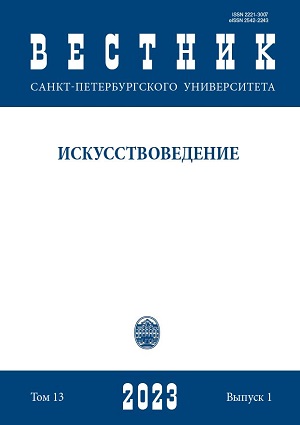To the Concept of “Sound Object” in Musical Theory and Composition Practice of the End of the 20th — the Beginning of the 21st Century
DOI:
https://doi.org/10.21638/spbu15.2023.102Abstract
The article is devoted to the concept of “sound object”, fundamental category for music of the late 20th — early 21st century. It is considered from the standpoint of Pierre Schaeffer’s theory of concrete music, Helmut Lachenmann’s concrete instrumental music, Dennis Smalley’s spectromorphology, James Tenney’s gestalt theory, and is also interpreted within the philosophical framework of Graham Harman’s object-oriented ontology and Bruno Latour’s actornetwork theory. The works of Beat Furrer, Peter Ablinger and Georg Friedrich Haas are also analyzed. The conclusion from the research is that in order to interpret the concept and phenomenon of a sound object in modern compositional practice, which is extremely diverse, musicological methods are not enough, and therefore, an appeal to modern philosophy can contribute to a more accurate interpretation and help analyze the objects of modern sound world in all their diversity.
Keywords:
sound object, Helmut Lachenmann, James Tenney, Dennis Smalley, Georg Friedrich Haas, Peter Ablinger
Downloads
References
Downloads
Published
How to Cite
Issue
Section
License
Articles of "Vestnik of Saint Petersburg University. Arts" are open access distributed under the terms of the License Agreement with Saint Petersburg State University, which permits to the authors unrestricted distribution and self-archiving free of charge.






